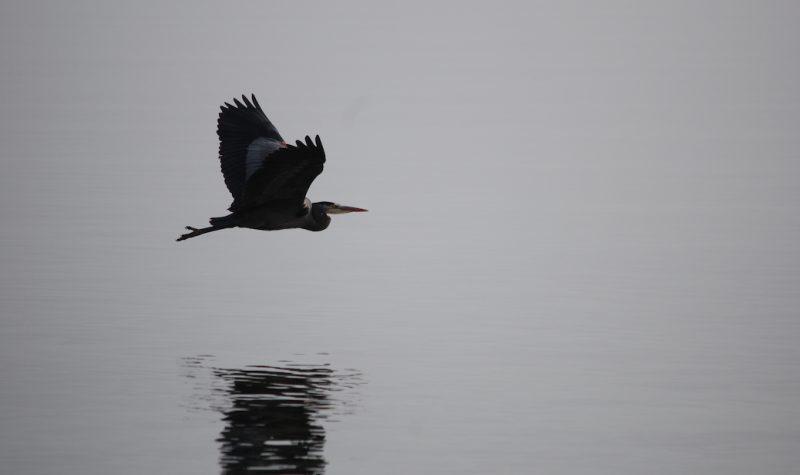Cortes Island’s second annual Heron Day was held Sunday, Sept. 5.
“Heron Day is where we get a whole bunch of volunteers to go out in different spots around Cortes Island, at the same time, to count heron,” explained Max Thaysen, President of the Friends of Cortes Island (FOCI). “If we have multiple eyes counting at the same time, then we know we are not double counting heron that are cruising around the island.”
Fourteen volunteers counted for about an hour between 10 a.m. and 12 p.m.
They saw 15 birds, 6 more than last year, which is not as significant as the numbers suggest. There were fewer volunteers checking fewer locations last year.
“We saw more heron in the proportion to more people looking, so in effect we saw the same number of heron. We saw approximately one heron in every one observation location, and that was the same last year and this year,” he said.
Thaysen mentioned some of the 14 locations in this year’s count: Carrington Bay, Whaletown Bay, Smelt Bay, Cortes Bay (inside and outside), and Mansons Lagoon (inside and outside).
FOCI looked at 9 locations last year.
“The Pacific Great Blue Heron is a species-at-risk 'of special concern' (which means it is vulnerable and on its way to being threatened or endangered),” he wrote.
Thaysen did not know if the Cortes Island population of herons is threatened, or not.
“It could be that they are common on the shores of Cortes, but not in a lot of places where they used to be common,” he said.
Thaysen noted that there are a lot more houses lining the shore as he paddles his kayak southward.
He added that herons may have simply been classified as a species of concern because the general population was once so much larger.
“I do not know which story is true," he added.
So what did this year’s count accomplish?
“We learned that there are more herons, which is good, and we also learned that there are still herons,” he said.




